Dyscalculia teaching strategies – Signs, what to do & games to play
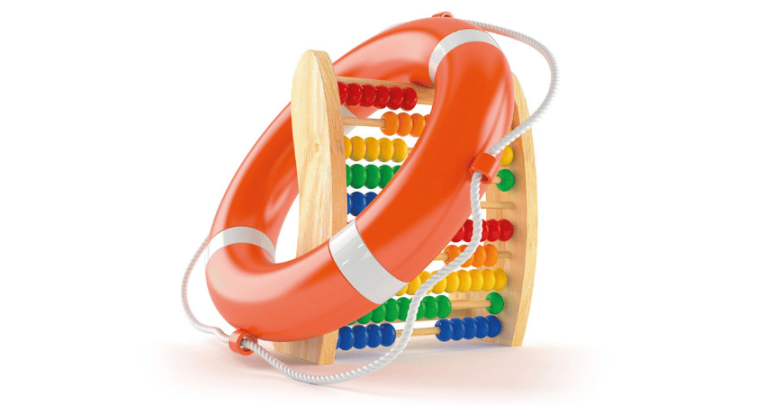
What is dyscalculia, how can teachers spot it and what’s the best way to teach those with it? Our experts explain all…

- by Teachwire
- Classroom expertise and free resources for teachers
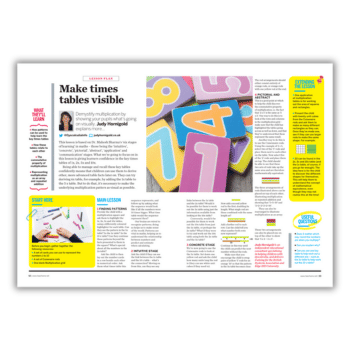
It is thought that around 6% of the population have dyscalculia, a similar percentage to that for dyslexia. Given that this is roughly 1 in 20 people, you are likely to find at least one learner with dyscalculia in every classroom, with boys and girls being affected equally. Implementing effective dyscalculia teaching strategies can empower students who struggle with numbers.
What is dyscalculia?
Dyscalculia is part of a group of three learning difficulties which fall under the Specific Learning Difficulties heading, the other two being dyslexia and dyspraxia.
The word dyscalculia comes from the Greek word ‘dys’ meaning ‘badly’ and the Latin word ‘calculia’ meaning ‘to count’. Therefore, the word dyscalculia literally means to ‘count badly’.
“Dyscalculia, like dyslexia, is thought to be genetic as it is often found to run in families”
Dyscalculia, like dyslexia, is thought to be genetic as it is often found to run in families. The exact cause is yet to be discovered, but it is generally believed that it is neurologically based and to be some sort of brain difference.
Definition
Unlike dyslexia, there is not currently an agreed diagnostic protocol to correctly identify dyscalculia. However the British Dyslexia Association has agreed its own definition:
Development dyscalculia is a specific and persistent difficulty in understanding arithmetic and basic number sense.
It may also affect retrieval of number facts and key procedures, fluent calculation and interpreting numerical information.
It is diverse in character and occurs across all ages and abilities. Dyscalculia is an unexpected difficulty in maths that cannot be explained by external factors.
Symptoms of dyscalculia
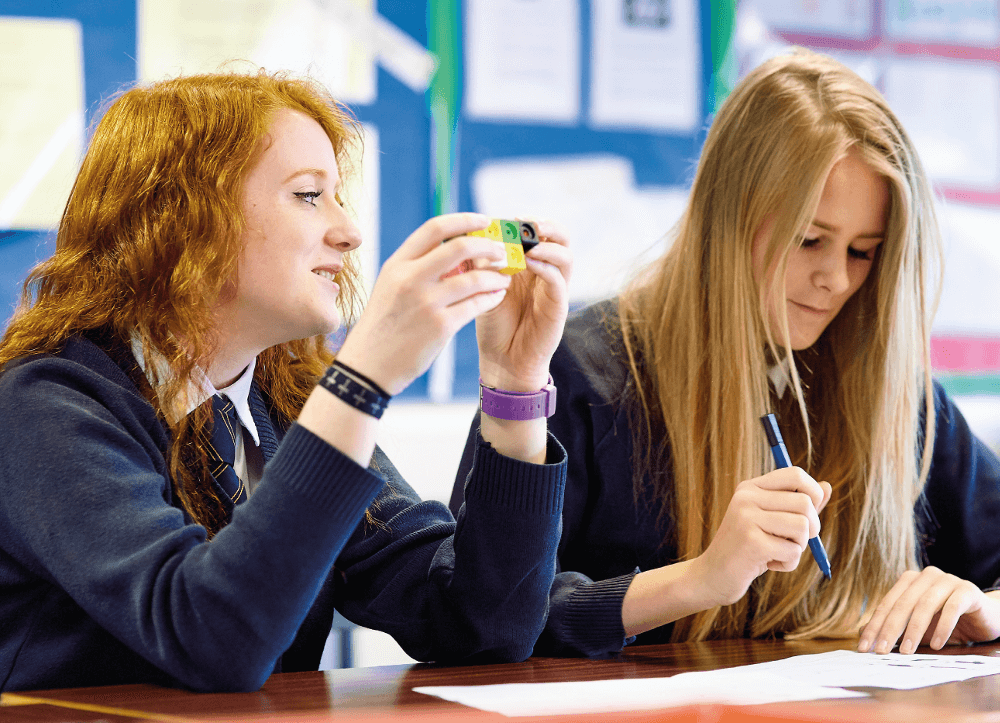
Maths difficulties are often thought of as a continuum, not a distinct category, with dyscalculia at the extreme end of this continuum.
It should be expected that developmental dyscalculia will be distinguishable from general maths difficulties due to the severity of difficulties with symbolic and non-symbolic magnitude, number sense and subitising.
Developmental dyscalculia can often co-occur with other specific learning difficulties, such as dyslexia, dyspraxia and ADHD.
Along with the British Dyslexia Association definition, and the other definitions that are currently available (DFES 2001 and DSM IV 2013), there is common agreement that dyscalculia mainly affects number skills as opposed to other areas of maths.
“Developmental dyscalculia can often co-occur with other specific learning difficulties”
A learner with dyscalculia may be able to calculate the correct answer when solving calculations but they may not know how they got there, for example.
In addition, you may notice the student has difficulties with:
- estimation
- short and long-term memory
- telling the time
- assessing numerical quantities
- using money (due to lack of understanding of place value)
- performing calculations
- sequencing
- pattern recognition
- direction
- left and right
More symptoms you might notice include:
- no intuitive grasp of numbers and their relative size
- uncertainty over whether a procedure will make the answer larger or smaller
- trouble rounding numbers up or down and estimating answers
- frequent counting on fingers
- particular problems understanding zeros and decimal points
- extreme difficulty in learning tables
- failure to see connections between known number relationships (e.g. if 3 + 5 = 8 then 8 – 5 = 3)
- inability to transfer skills or procedures learned to solve one set of problems to tackle different problems
- difficulty working out what a question is asking
- tendency to panic and go blank when prompted with number questions, especially under pressure
- tendency to confuse similar-looking numbers, such as 3 and 8 or 6 and 9
- confusion regarding maths symbols (e.g. ÷, –, +, etc.)
Difficulties with retrieving number facts and procedures implies there may also be an associated processing difficulty, which is similar to dyslexia.
It is important to reiterate here that specific learning difficulties tend to be co-occurring and that a high proportion of learners have more than one condition. According to research, 40% of individuals with dyslexia have difficulties with mathematics.
Karen Mace is head of assessment and professional-level training at the British Dyslexia Association. The charity has developed a Level 5 Certificate that enables education professionals to become specialist teachers in supporting dyscalculia and maths learning difficulties.
Visual times tables lesson plan
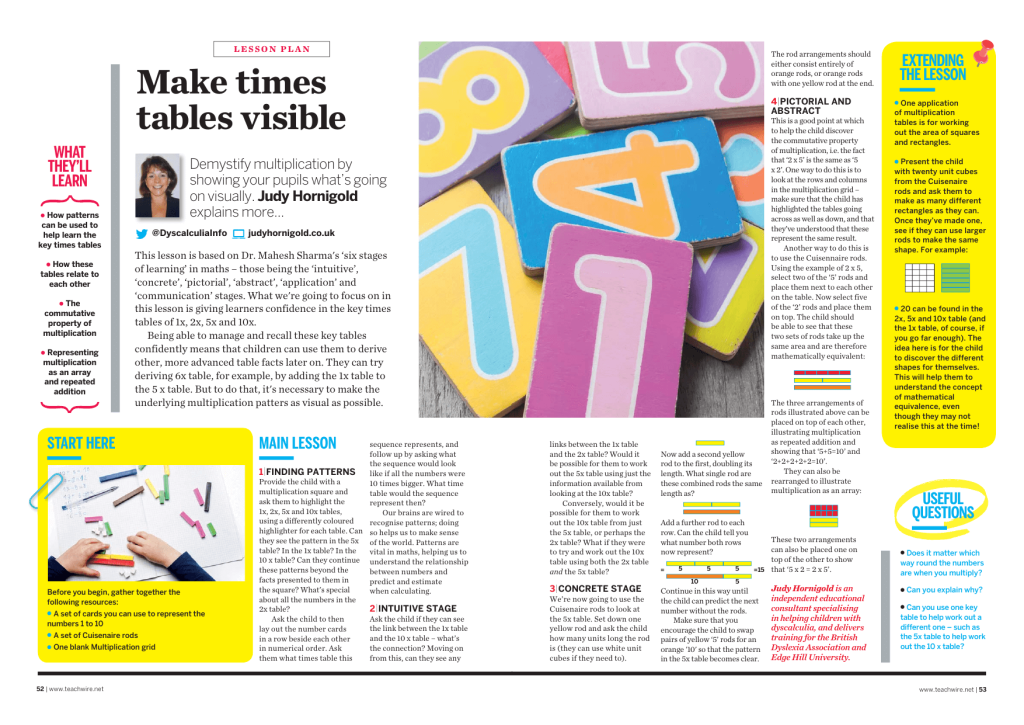
Written by dyscalculia specialist Judy Hornigold, this times tables lesson plan will demystify multiplication by showing your pupils what’s going on visually.
Dyscalculia teaching strategies
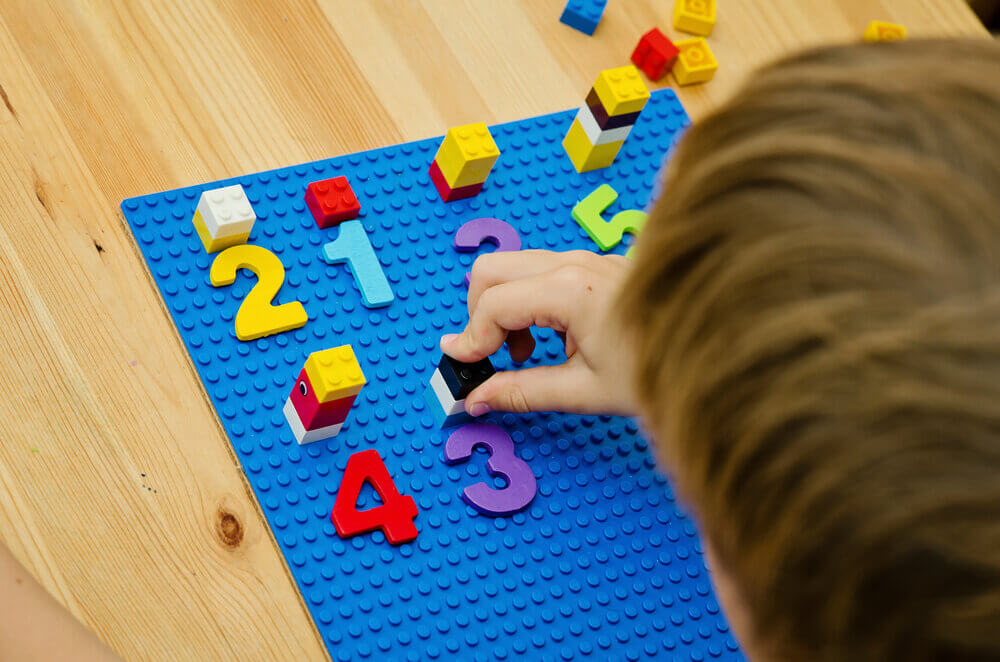
Navigating the complexities of dyscalculia in the classroom can be challenging, but these dyscalculia teaching strategies can make a significant difference in helping students develop their maths skills and confidence…
The counting trap
If pupils have an over-reliance on counting in ones, use manipulatives and visuals, such as base-10 blocks (Dienes), to provide images of quantities and to interlink them.
Use recognisable and consistent patterns based on 1, 2, 5 and 10 (the core facts). Show pupils how ‘chunking’ (partitioning) can help them work beyond ones.
Counting backwards
Dyscalculic pupils may have difficulty counting backwards or reversing maths sequences. This requires working memory, so it can be much harder than many teachers and parents recognise.
It sets the foundation for subtraction and is a good opportunity to demonstrate vocabulary such as ‘take away’, ‘subtract’ and one of my favourite questions: “Is it bigger or smaller?”.
Sense of number and estimation
Objects set out in recognisable patterns create the foundations for developing these skills. The question, “Is it bigger or smaller?” is useful.
For many pupils, the basics need frequent revisits, topping up memory and securing understanding. Remember that children may also have difficulty estimating and keeping track of the time.
Place value
A child can learn to count to 10, but writing ‘10’ as two digits is a very sophisticated and underrated task in terms of understanding how that communicates ‘ten’.
This can be demonstrated as a cognitively developmental sequence, using base-10 blocks on a place value card as the starting point, then weaning the child down to using just the symbols.
“Writing ‘10’ as two digits is a very sophisticated and underrated task”
You can use a similar process to demonstrate multiplying and dividing by 10, 100, and so on. Try to avoid a reliance on the concept of ‘add/ take away a zero’.
Recalling facts
One of the key difficulties for dyscalculic learners is retention of basic facts and maths procedures in their long-term memory. But, like most of the learning problems in maths, this is not exclusive to dyscalculic pupils.
Show children how to link patterns (and their symbols) to demonstrate addition and subtraction facts, for example:
5+5 is 10 and 5+6 is 11, shown as 5+5+1
This principle can be extended to multiplication facts, too, developing pupils’ understanding and giving them strategies to access their knowledge.
For example, explain and demonstrate 6 x 6 as six lots of six. The sixes can be chunked as (6+6+6+6+6) and (6), that is 5×6 and 1×6, making 30+6; 36.
You can apply this strategy to many other examples. It teaches the child about multiplication and how it is linked to addition. It also sets the foundation for later, more challenging work on multiplication and algebra.
Speed of working
The culture of maths to provide answers quickly is counter-productive for many children, especially those with a slower rate of processing and slow or uncertain recall of procedures.
Any help in reducing this (often unrealistic) expectation will be good for these learners. Give them fewer examples, but carefully selected to provide a sufficient breadth of learning experience.
Mental arithmetic
Many people think mental arithmetic skills are an essential basic for learning maths. I would challenge that belief.
Two key skills you need to be good at mental arithmetic are short-term memory (to remember the question) and working memory (to work out the answer). It also helps if you have quick access to the basic facts.
“One reasonable adjustment would be to show the question, not just say the question”
Dyscalculic children often have difficulties with these things, so one reasonable adjustment would be to show the question, not just say the question. Another would be to give more time and allow a jotter pad.
Ultimately, each child is different, and as the great US pioneer of dyslexia, Margaret Rawson said, it is a matter of “teaching maths as it is, to learners as they are”.
Thanks to Steve Chinn for these dyscalculia teaching strategies. Steve is a teacher and expert in dyscalculia and learning difficulties. Find more info at stevechinn.co.uk/dyscalculia
Reducing anxiety in pupils with dyscalculia
Our students need to feel successful in mathematics. We need to teach them where they are, gradually taking them from something they can already do to something new. If we don’t, they’ll fall at the first hurdle, so find out what they can do and go from there.
Pay attention to working memory. Maths anxiety reduces it and dyscalculia is associated with weaknesses in it. Keep presentation materials free of clutter and easy to follow.
Model the mathematics live, rather than clicking through the steps. Students need to see how it’s done in real-time.
With multi-step processes, introduce them gradually. Give students opportunities to practise component parts before putting everything together.
“Model the mathematics live, rather than clicking through the steps”
Backwards-fading can be a powerful tool – instead of 10 questions, provide all steps, bar the last, in question 1. Then all steps bar the final two in question 2. Continue to fade out until they’re completing questions without any scaffold.
If you have pupils who are scared of making errors, let them work with mini whiteboards or on tables with drywipe pens.
Once you’ve got them trying, gradually transition them to paper so that they no longer see their books as evidence of failure, but as tools to help them think.
Messages count
Don’t inadvertently transmit anxiety-inducing messages. Avoid throwaway comments such as, ‘This bit’s hard’, or ‘You might struggle with this.”
Show students that you value mathematical thinking over calculation speeds, and praise them when they engage in mathematical thought – not just when they’re correct.
Use your questioning to demonstrate that you value solutions and processes over final answers. Once they’re happy to engage in the process, the answers will come.
Jemma Sherwood is the senior lead practitioner for mathematics at Ormiston Academies Trust.
10 more dyscalculia teaching strategies to try
1) Your attitude can make a huge difference – make it clear to the pupil that you understand their genuine difficulty and want to help them to find successful ways of working
2) Be positive and encouraging to build students’ self-esteem and confidence
3) Make your classroom a safe place in which pupils can make mistakes without anxiety; avoid embarrassing the pupil
4) Be clear and precise with your instructions
5) Use solid, handle-able, everyday examples where possible for explanations
6) Read written questions out loud to make sure that the meaning is clear and to remind students of any procedures they need to follow
7) Allow the use of a times table grid or calculators
8) Give out handouts with clearly presented key facts, formulae and worked examples. Use large, easily legible writing with wide spacing, colours and cartoons to make them more visually appealing
9) Do not set too much homework. When marking, acknowledge and praise correct method and progress, but point out any errors due to copying or transposing numbers. If it is clear that the student has not understood the question or the method, it may be wise to see the student individually to go through the work and reinforce methods
10) Keep your sense of humour. Be upbeat and approachable. Organise a time in the week when students know that they can come and see you individually to sort out any worries
Thanks to Diana Hudson for these dyscalculia teaching strategies. Diana is the author of Specific Learning Difficulties – What Teachers Need to Know (Jessica Kingsley Publishers).
6 games for pupils with dyscalculia
The following games are good for engaging, developing and supporting students with dyscalculia. They can also benefit learners who struggle with maths for other reasons, including dyslexia.
1 | The staircase game
Aim: To develop an understanding of the sequence of numbers from 1 to 10.
You will need: Cuisenaire rods 1-10, one of each colour; a 1-10 die.
How to play: Two players take it in turn to roll the dice and place the corresponding Cuisenaire rod on the table to create the 1-10 number sequence. If your number is repeated when the die is thrown you miss your turn.
So, if player one throws a 2 they will place the red rod on the table. If player two throws a 7, they have to decide how far to the right of the 2 to place the rod in order to make a Cuisenaire Staircase.
2 | Clear the deck
Aim: To develop instant recall of number bonds to ten. This game is useful at the beginning of a lesson as a warm-up activity, or at the end for revision or consolidation.
You will need: Four sets of digit cards from 1 to 9.
How to play: Shuffle the cards and place them face up on the table in three rows of four. Players take it in turns to pick up pairs of cards that add up to 10.
The gaps that are left are then filled with cards from the remaining pack. The idea is to take it in turns and spot the pairs that make 10 as quickly as possible.
3 | Estimation game
Aim: Dyscalculic learners find it hard to appreciate and compare magnitude in number and this is a motivating and multi-sensory way to help them do it. It requires visualisation, too; another key skill for them to develop.
You will need: 10 dried beans/buttons/ glass nuggets; a box to use as a shaker.
How to play: Without letting the pupil see, place a small number of the beans/buttons/glass nuggets in an opaque box with a lid. Shake the box and ask the pupil to guess how many items are in it.
Then empty the contents onto the table and count the items to see how close the guess was. Encourage the child to place the items in a line. Repeat with smaller and larger numbers of items.
4 | Ten-frame game
Aim: To develop conservation of number through reorganising number formation on a ten-frame. The game builds a strong visual image of numbers and helps visualise bonds to ten by showing both spaces and filled squares in each arrangement of dots.
You will need: Ten ten-frames with each dot arrangement from 1-10; a blank ten-frame; counters to place on the ten-frame.
How to play: Pick a ten-frame card at random and show it to the pupil for five seconds. Then remove it and ask them to reproduce the image on their blank ten-frame using the counters.
Can they tell you how many counters there are? How many spaces there are? Can pupils make a number story linking the two?
5 | The nasty game
Aim: To develop an understanding of place value. To make the largest four-digit number from rolling a 0-9 dice four times.
You will need: A thousands/hundreds/tens/units grid for each player, and a 0-9 die.
How to play: This game is for two players. They take it in turns to roll the die and write the number in their opponent’s grid until each player has generated a four-digit number.
The ‘nasty’ element is that because you are completing your opponent’s grid and not your own, the focus is on getting your opponent to lose.
So, if you throw a 1 you would place it in your opponent’s thousands column, whereas a 9 would go in their units column.
6 | Trains
Aim: To develop estimation and mental arithmetic skills. This makes a good starter activity, requiring visualisation, prediction, estimation and mental calculation.
You will need: One Cuisenaire rod of each length between 1 and 10.
How to play: This is a game for two players. Decide who goes first and choose a ‘distance’ between 11 and 55. Let’s use 25 as an example. The aim is to make a ‘train’ that is exactly 25 long.
Each player in turn puts down a Cuisenaire rod, laying them end to end to create a single train. The person who puts down the last rod to make 25 exactly, wins.
If a player puts down a rod that makes the train longer than 25, the opponent wins.
Judy Hornigold is an independent educational consultant specialising in dyscalculia and dyslexia. She is the author of The Dyscalculia Pocketbook (one of 40 titles in the Teachers’ Pocketbooks series, available at £9.99 each from teacherspocketbooks.co.uk), from which this feature has been adapted, with permission. Browse more maths games KS1 ideas and maths games KS2 ideas.










